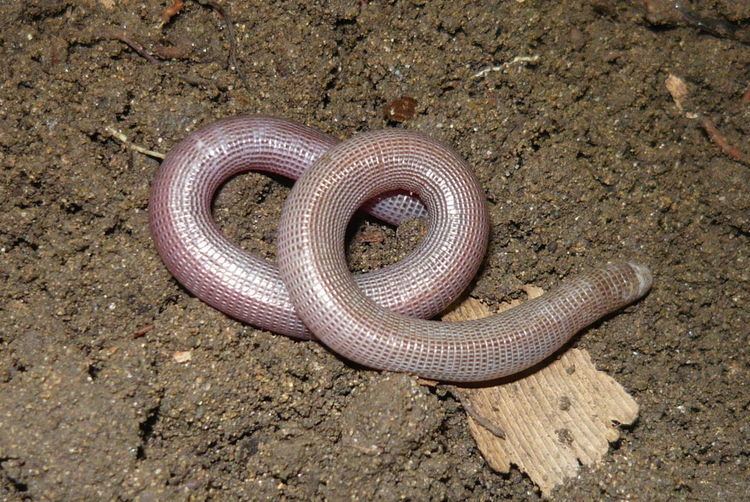Genus Amphisbaena Higher classification Amphisbaena | Phylum Chordata Scientific name Amphisbaena caeca Rank Species | |
 | ||
Similar Amphisbaena, Reptile, Amphisbaenia, Scaled reptiles | ||
Culebrita ciega de puerto rico puerto rican common blind snake lizard amphisbaena caeca
Amphisbaena caeca, commonly known as the Puerto Rican worm lizard (Spanish vernacular: culebrita ciega), is a species of worm lizard endemic to Puerto Rico. These animals are vermicular reptiles that live under logs, rocks, and dirt. Other species of Amphisbaenids in the Caribbean include Amphisbaena bakeri, Amphisbaena fenestrata, Amphisbaena schmidti, Amphisbaena xera, and Cadea blanoides.
Contents
- Culebrita ciega de puerto rico puerto rican common blind snake lizard amphisbaena caeca
- Description
- Habits
- Habitat
- Geographic range
- References
Amphisbaenids are legless, worm-like reptiles with elongated bodies nearly uniform in diameter. They are covered with ring-like scales similar in appearance to earthworms. They are underground animals, hence the eyes have degenerated to tiny indistinct spots under the rings.
Description
Amphisbaena caeca is pinkish-brown on the head and tail with many dark spots on the annuli (body rings) of which there are between 214 and 237 in this species. It measures 10 inches (260 millimeters) in snout to vent length (SVL). Because it is somewhat difficult to distinguish its head from its tail, it is sometimes referred to as a "two-headed snake" (in Puerto Rico culebra de dos cabezas) by local people. According to folklore, wearing a live Amphisbaena on the body "helps safeguard pregnancy" while wearing a dead snake "helps rheumatism".
Habits
They can be found burrowing in the ground under logs, rocks, old tree stumps, and under termite and ant nests.
Habitat
They live in dense woodlands, thickets, and caves.
Geographic range
They are found in Puerto Rico, Isla Vieques, Isla Culebra, and the Virgin Islands.
